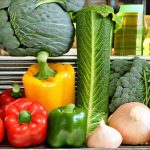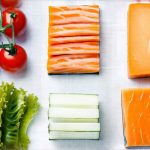The gut microbiome – the vast ecosystem of trillions of microorganisms residing in our digestive tract – has emerged as a central player in overall health. It’s no longer just about digestion; this intricate community influences everything from immunity and mental wellbeing to nutrient absorption and even chronic disease risk. For years, we’ve focused on what we eat, but increasingly, the spotlight shines on nurturing the microscopic life within us. A truly holistic approach to wellness begins with understanding how our dietary choices directly impact the composition and function of this internal garden. It’s about feeding the beneficial bacteria that support a healthy gut environment while limiting those that can contribute to imbalances.
Traditional dietary advice often centers around reducing fats, sugars, or specific food groups. While important, these guidelines frequently overlook the foundational aspect of microbial health. The key isn’t necessarily restriction, but rather cultivation. That is, intentionally choosing foods that promote a diverse and thriving gut microbiome. This requires moving beyond simply avoiding “bad” foods and actively incorporating those that are known to support beneficial bacteria. Building a gut healing grocery list isn’t about complicated diets or restrictive rules; it’s about making informed choices that prioritize the health of your internal ecosystem, leading to improved digestion, enhanced immunity, and potentially, a more vibrant life.
The Foundation: Fiber-Rich Foods
Fiber is arguably the most crucial component of a microbiome-friendly diet. Unlike many nutrients that are digested in the upper gastrointestinal tract, fiber reaches the colon relatively intact, where it serves as the primary food source for our gut bacteria. These bacteria ferment fiber, producing short-chain fatty acids (SCFAs) like butyrate, propionate, and acetate – compounds vital for gut health and overall wellbeing. SCFAs nourish the cells lining the colon, reduce inflammation, strengthen the gut barrier, and even influence brain function. Different types of fiber feed different bacteria, highlighting the importance of variety in your dietary intake.
- Soluble Fiber: Dissolves in water, forming a gel-like substance that slows digestion and helps regulate blood sugar levels (oats, barley, apples, citrus fruits).
- Insoluble Fiber: Adds bulk to stool and promotes regularity (whole grains, vegetables like broccoli and carrots, wheat bran).
Focusing on whole, unprocessed foods is essential. Refined grains have had much of their fiber removed, diminishing their benefits for the microbiome. Incorporating a wide range of plant-based foods ensures you’re providing a diverse array of fibers to support a diverse microbial community. Think beyond just adding more salads; consider incorporating legumes, nuts, seeds, and whole grain alternatives into your daily meals.
Prebiotics & Probiotics: A Dynamic Duo
While fiber provides the bulk of bacterial sustenance, prebiotics and probiotics play distinct yet complementary roles in gut health. Probiotics are live microorganisms that, when consumed in adequate amounts, confer a health benefit to the host – meaning they add beneficial bacteria directly to your gut. Fermented foods like yogurt (with live cultures), kefir, sauerkraut, kimchi, kombucha, and miso are excellent sources of probiotics. However, it’s important to remember that probiotic strains vary greatly, and their effects can be specific to each strain.
Prebiotics, on the other hand, are non-digestible food ingredients that selectively stimulate the growth or activity of one or more species of beneficial bacteria already residing in the colon. They essentially “feed” the good bacteria, helping them thrive and outcompete less desirable microorganisms. Foods rich in prebiotics include garlic, onions, leeks, asparagus, bananas (especially slightly green ones), oats, barley, apples, and chicory root. The combination of probiotics and prebiotics is often referred to as “synbiotic” nutrition – a powerful approach to enhancing gut health. The idea isn’t just about adding bacteria; it’s about creating an environment where those beneficial bacteria can flourish. If you are vegetarian or vegan, understanding gut health tests is important for a personalized approach.
Building Your List: Grocery Store Navigation
Navigating the grocery store with microbiome health in mind requires a bit of intentionality, but it doesn’t have to be overwhelming. Start by focusing on the perimeter of the store – this is typically where you’ll find the freshest, least processed foods. The produce section should be your first stop. Load up on a rainbow of fruits and vegetables, prioritizing those with edible skins (where appropriate) as these contain additional fiber. In the grains aisle, opt for whole grain options like quinoa, brown rice, oats, and barley instead of refined white rice or flour-based products.
When selecting fermented foods, read labels carefully to ensure they contain “live and active cultures.” For yogurt, choose plain varieties with minimal added sugar, as excess sugar can negate the benefits. Look for unsweetened kefir options too. Don’t be afraid to explore less common items like tempeh or natto (fermented soybeans), which are rich in probiotics and nutrients. Finally, don’t overlook legumes – beans, lentils, and chickpeas are excellent sources of fiber and prebiotics, providing a substantial boost to your gut microbiome. Considering smart grocery shopping can make this process easier.
Beyond Food: Hydration & Polyphenols
While dietary choices are paramount, other factors also contribute to a healthy gut. Hydration is crucial for maintaining the integrity of the gut lining and supporting regular bowel movements, which help eliminate waste products and prevent microbial imbalances. Aim for at least eight glasses of water per day, and consider incorporating herbal teas or infused water for added flavor and hydration.
Beyond fiber and fermented foods, polyphenols – naturally occurring compounds found in many plant-based foods – also play a significant role in gut health. Polyphenols aren’t well absorbed in the upper digestive tract, meaning they reach the colon where they are metabolized by gut bacteria into beneficial compounds. Berries (blueberries, raspberries, strawberries), dark chocolate (with high cocoa content), green tea, and coffee (in moderation) are all excellent sources of polyphenols. These compounds can help modulate the microbiome composition, reduce inflammation, and protect against oxidative stress.
Making it Sustainable: Small Steps & Consistency
The biggest mistake people make when trying to improve their gut health is attempting radical dietary changes overnight. This often leads to overwhelm and ultimately, abandonment of new habits. Instead, focus on making small, sustainable changes that you can realistically maintain over the long term. Start by adding one new fiber-rich food or fermented food to your diet each week.
- Gradually increase your water intake.
- Swap refined grains for whole grain alternatives.
- Experiment with different prebiotic and probiotic rich foods to find what you enjoy.
- Pay attention to how different foods make you feel – this can help identify potential trigger foods or intolerances.
Consistency is key. A single healthy meal won’t transform your microbiome; it’s the cumulative effect of consistent, nourishing choices that leads to lasting improvements. Remember that gut health is a journey, not a destination. Embrace experimentation, listen to your body, and celebrate small victories along the way. Prioritizing your microbiome isn’t just about optimizing digestion—it’s an investment in your overall wellbeing. If you struggle with focus or energy levels, consider meal organization techniques to support both gut and brain health. It’s also important to understand the connection between gut health and anxiety. Finally, planning ahead with a travel kit for gut health can help maintain your routine on the go.


















